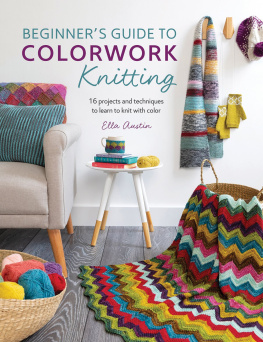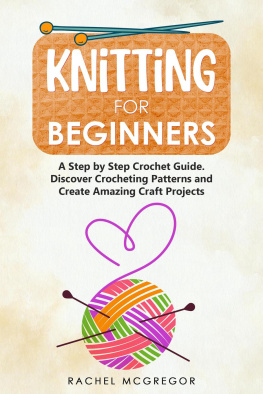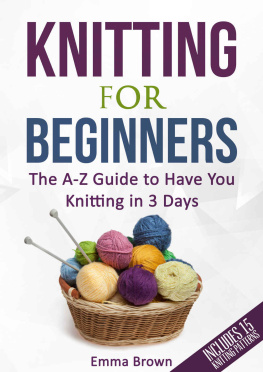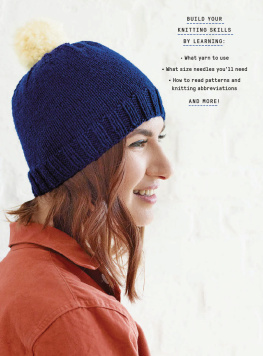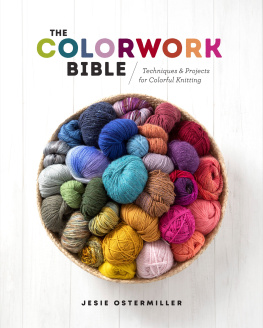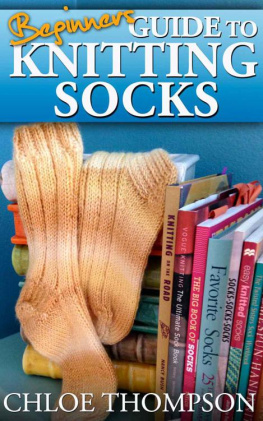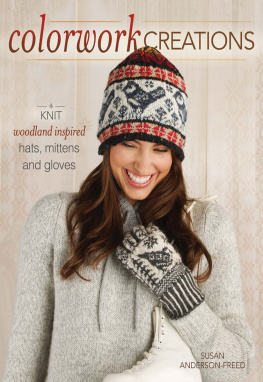Contents
Guide
BEGINNERS GUIDE TO
COLORWORK
Knitting
16 projects and techniques to learn to knit with color
Ella Austin

www.sewandso.co.uk
Contents
Introduction
For me, colour is the most exciting part of knitting! Cables, lace, texture, and beautiful shaping certainly have their appeal, but its colour that makes me smile and gets me eager to cast something on.
Ive found that many knitters who feel the same excitement about colourwork knitting also feel apprehensive. Firstly, there are the colourwork techniques to learn, and they can appear complicated. Secondly, and often the biggest obstacle, is the task of finding colours that work together.
The first concern is easiest to overcome; colour techniques may look impressive, but theyre almost always deceptively easy to knit! Just take it stitch by stitch and youll be fine.
The second issue is more complex. This book will give advice on colour choices, as well as a few ground rules that are helpful to bear in mind. However, the most important advice is to simply try things out. You might even surprise yourself! Try not to be disheartened when something doesnt work like you want it to. Remember with knitting, you can simply unpick your stitches, refine your colour options and try again persistence is the key to colour happiness.
This book is written as a colourwork knitting course that intertwines the teaching of the techniques with the projects. Each design includes advice on yarn and colour choices as well as step-by-step tutorials for the specific methods required. I believe that this approach is more helpful to the learner as it combines the theory of the technique with a practical example.
Of course, you can also refer to the tutorials individually and apply them to different projects. Likewise, the projects are accessible to experienced knitters who would simply like to make the designs.
I hope you enjoy learning new techniques and playing with colour!
Ella
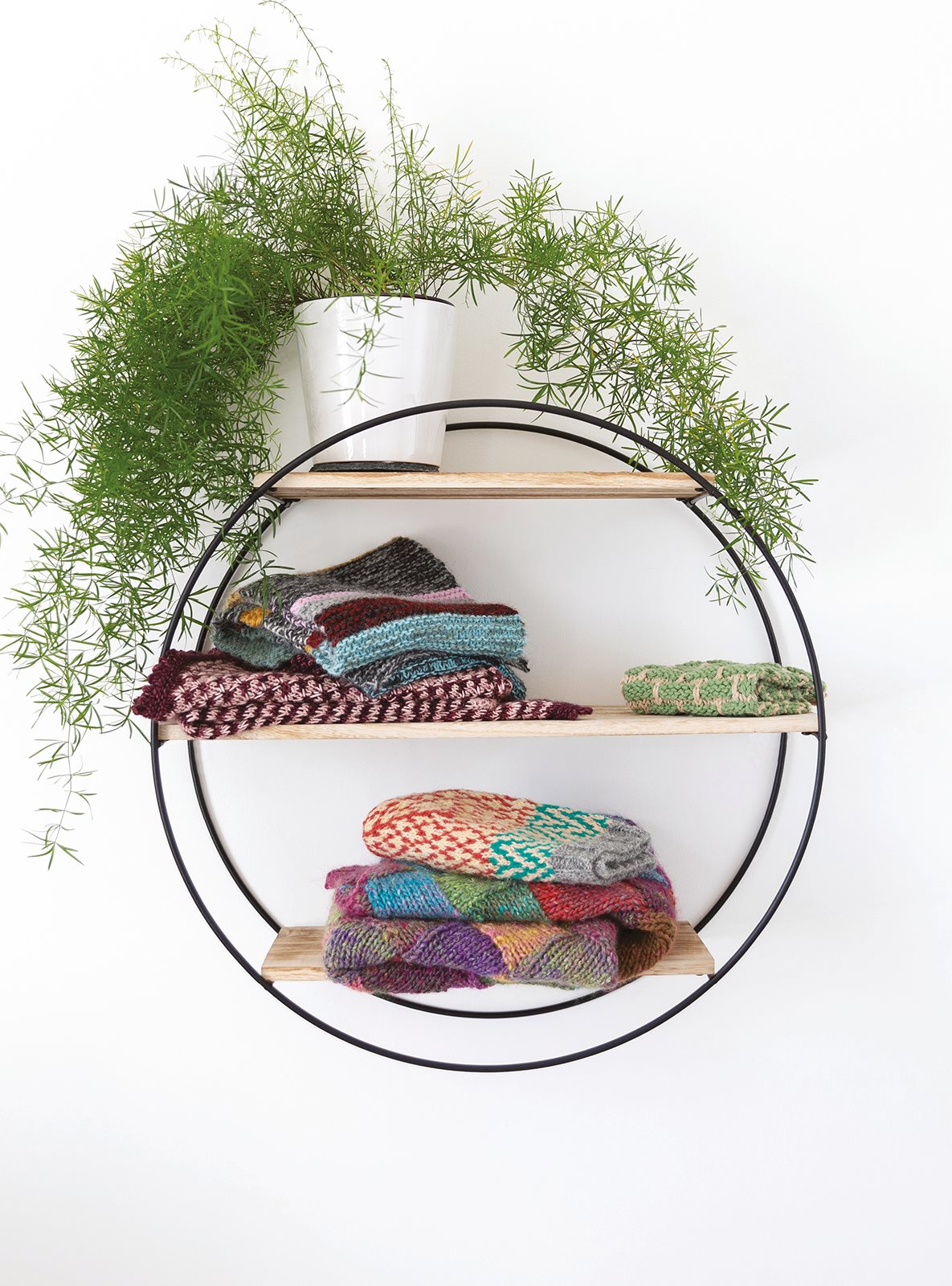
Choosing Colours
Colour can be very personal as we all have our own perceptions and tastes. We may already have favourite colours and palettes that we are drawn to. However, choosing colours to combine for a colourwork project can offer its own challenges! Sometimes its as simple as picking a bunch of colours that you love, other times more thought should be given to the attributes of the colour.
Attributes of Colour
Colour theory usually refers to three main attributes Hue, Value and Saturation.
- Hue describes the pure colour itself, e.g. green. When we describe a colour, e.g. light green or grass green, green is the hue. Basic colour wheels show the hues.

- Value describes how light or dark the colour is, e.g. yellow is lighter than purple. Value is the most important attribute to consider for colourwork knitting. A strong contrast between light and dark will enhance the knitted patterns.

- Saturation describes the intensity of the colour. A pure hue such as red can be mixed with white, grey or black to affect the saturation. Using lots of saturated colours can make a project look vivid and bold whereas undersaturated colours will look subtler. Mixing saturated colours with undersaturated colours can be very effective.

Hue

This colour wheel shows the primary, secondary and tertiary colours. Red, yellow and blue are the three primary colours. All other colours can be made by mixing combinations of these three colours.
The colour wheel can be split in half with those closest to orange being described as warm and those closest to blue being cool. Warm colours seem to stand out while cool colours seem to recede. With this in mind it can sometimes be effective to pick warm colours for parts of a pattern that you would like to stand out and cool colours as background colours.
Value
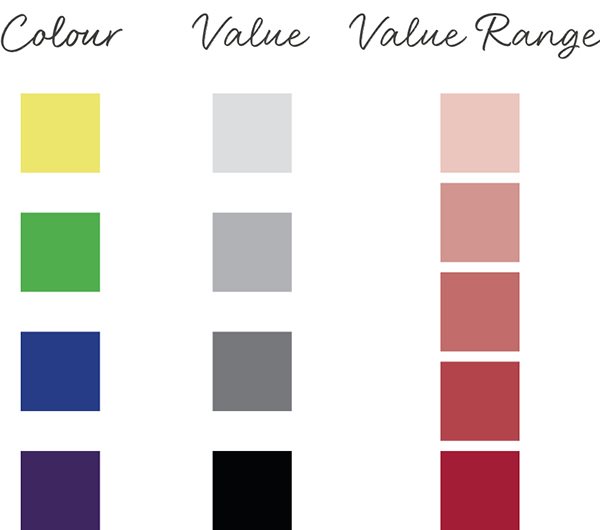
Value refers to contrast; how light or dark a colour is. Value is very important to consider in colourwork knitting, particularly stranded knitting. For a stranded colourwork pattern to be intelligible there needs to be a high contrast between the two colours used together.
It can be surprisingly hard to determine value by looking at two colours together. Red and green, for example, can be very close in value despite looking distinct as two different colours. It can be helpful to take a black and white photograph of your yarn choices (or use software to make a colour photograph appear greyscale) to determine the colour values and whether there is enough contrast for the affect that you are aiming for.
A colours value can be affected by its saturation. Red, for example, can be light or dark. Each different hue has a value range.
Saturation
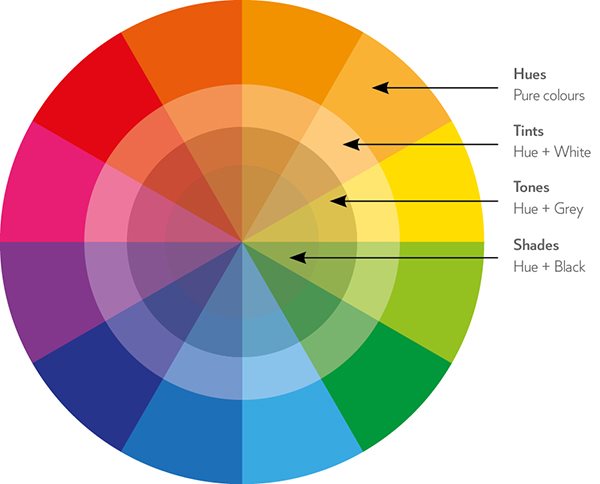
Saturation refers to the purity of a colours hue. The intensity of the colour can be affected by adding white, grey or black.
- Tint mixes a colour with white.
- Tone mixes a colour with grey.
- Shade mixes a colour with black.
The saturation can affect the colours value. Mixing a hue with white makes the colour lighter and mixing with black makes it darker.
Picking lots of saturated colours from all around the colour wheel will result in a project that is bright and bold, which might be considered by some as loud or garish. I find that its most effective to limit saturated colours and use them alongside light, dark or toned colours. Using similar hues but with varied saturation is also very effective. The Thorn Stitch Shawl pattern in this book uses a dark pink-purple with a very light purple-pink.
Colour Inspiration
Colour inspiration can be found everywhere and in many different ways. Colour wheels can be helpful and colour palette suggestions can be found in design books, magazines and online. Sometimes you can be struck by a colour combination that you happen to notice this could be anything from a painting you love or a view from your window to wallpaper patterns, book covers and even food.
Whether you are searching for colour combinations or just happen to notice them, its a good idea to start collecting inspiration in notebooks, files, folders, image sharing websites, and wherever you can. Save images that you find online, grab a camera if needed, jot down notes, record ideas and keep it all somewhere that you can refer back to. Once you have chosen the colours that you would like to use, you can search for yarns.

